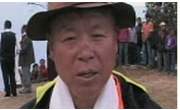본 논문은 정치폭력범죄행위에 내제되어 있는 의미를 재해석하기 위함으로, 이를 위해 네팔의 Central Terai 지역의 정치폭력범죄행위에 대한 사람들의 인식과 그에 대한 결과 등에 대해 범죄...
http://chineseinput.net/에서 pinyin(병음)방식으로 중국어를 변환할 수 있습니다.
변환된 중국어를 복사하여 사용하시면 됩니다.
- 中文 을 입력하시려면 zhongwen을 입력하시고 space를누르시면됩니다.
- 北京 을 입력하시려면 beijing을 입력하시고 space를 누르시면 됩니다.

People’s Perception and Consequences of Political Violence in Central Terai of Nepal = 네팔 Central Terai의 정치폭력범죄행위에 대한 사람들의 인식과 결과들에 대한 범죄학적 접근
한글로보기https://www.riss.kr/link?id=A99771927
- 저자
- 발행기관
- 학술지명
- 권호사항
-
발행연도
2011
-
작성언어
English
-
주제어
사람들의 인식 ; 결과 ; 정치폭력 ; 네팔 ; 범죄학적 관점 ; People’s Perception ; Consequences ; Political Violence ; Nepal ; Criminological Perspectives
-
등재정보
KCI등재
-
자료형태
학술저널
-
수록면
257-292(36쪽)
-
KCI 피인용횟수
0
- 제공처
-
0
상세조회 -
0
다운로드
부가정보
국문 초록 (Abstract)
본 논문은 정치폭력범죄행위에 내제되어 있는 의미를 재해석하기 위함으로, 이를 위해 네팔의 Central Terai 지역의 정치폭력범죄행위에 대한 사람들의 인식과 그에 대한 결과 등에 대해 범죄학적 관점에서 살펴보는 것이 목적이다. 특히, 본 논문은 시골과 중소도시의 사람들을 대상으로 정치폭력범죄행위를 어떻게 받아들이고, 또한 어떠한 의미로 해석하는지 그리고 이에 대해서 어떻게 반응을 보이는지에 초점을 두었다. 더욱이, 정치폭력범죄행위에 대한 네팔사람들의 경험 그리고 이에 대한 느낌들에 대해서 그들이 어떻게 해석하고 의미를 부여하는 지에 중점을 두었다. 이를 위해 인터뷰에 기초한 연구방법이 채택되었으며, 연구대상 지역(Birgunj, Kalaiya, Gaur and Jankapur)에 거주하는 정치폭력의 경험을 가지거나 혹은 목격한 남여(지역사회의 저널리스트와 지역단체장 및 인권운동가들을 포함한)를 대상으로 하였다.
다국어 초록 (Multilingual Abstract)
The purpose of this paper is to un-ravel the underlying mystifying agent that offer ‘meaning’ to the present violence. To do so, the paper is discussed people’s perception and consequences of political violence in central Terai using the crimino...
The purpose of this paper is to un-ravel the underlying mystifying agent that offer ‘meaning’ to the present violence. To do so, the paper is discussed people’s perception and consequences of political violence in central Terai using the criminological perspectives. The aim of study is to convey the general impression of the way in which people in the villages and towns discuss violence among themselves and to the others. The paper is pursued to describe people’s feelings and experiences of violence, the way they have felt and analysed, to position the discussions in a larger academic debate. To take the discussion forward, paper is placed questions such as how do people understand violence in central Terai and what do they talk about it? How do they cope and whether their daily life situations are influenced by such violence? Whilst interrogating these questions, the type of violence, and the people who encourage and organise violence has also been reflected upon. In order to present the case, ethnographic information was collected in central Terai, especially, in Inarwasira VDC of Bara district, in Nepal between December 2010 and February 2011. Data was also supported from informal discussions held in Rautahat, Parsa and Dhanusa districts. People for interviews were considered both men and women based on their past experiences of violence and those who witnessed it from a distance, including local leaders, journalists in the community as well as aid agency workers and human rights activists in the district towns. Informants were included people at local towns such as Birgunj, Kalaiya, Gaur and Jankapur.
목차 (Table of Contents)
- Abstract
- Ⅰ. Introduction
- Ⅱ. Violence in Central Terai
- Ⅲ. People’s Perception of Violence in Central Terai
- Ⅳ. Effects of Violence
- Abstract
- Ⅰ. Introduction
- Ⅱ. Violence in Central Terai
- Ⅲ. People’s Perception of Violence in Central Terai
- Ⅳ. Effects of Violence
- Ⅴ. Conclusion
- Reference
- 국문요약
참고문헌 (Reference)
1 Human Right Report, "world report 2011" Human Rights Watch 2011
2 Human Right Report, "world report 2010" Human Rights Watch 2010
3 Žižek, Slavoj, "Violence" Profile Books 2009
4 Gurung, Harka, "Trident and Thunderbolt: Cultural dynamics in Nepalese Politics" Social Science Baha 2003
5 Jha, Prasant, "Three years later: Madhesis have it far better in January 2010 than in January, (22 Jan - 28 Jan)"
6 Giddens, Antony, "The nation state and violence" Polity Press 294-341, 1985
7 Jha, Prasant, "The centre can’t hold: All the parties are competing to appease the militants, (27 Feb - 05 Mar)"
8 Burghart, Richard, "The Formation of the Concept of the Nation-state in Nepal" 15 (15): 1-101, 1984
9 Kakar, Sudhir, "The Colour of Violence: Cultural identities, Religion and Conflict" The University of Chicago Press 1996
10 최관, "The Approach of the 'Positivist' School and the 'Interpretative' School to the Relationship between Theory and Method, using examples from Criminological Research" 한국콘텐츠학회 4 (4): 16-19, 2008
1 Human Right Report, "world report 2011" Human Rights Watch 2011
2 Human Right Report, "world report 2010" Human Rights Watch 2010
3 Žižek, Slavoj, "Violence" Profile Books 2009
4 Gurung, Harka, "Trident and Thunderbolt: Cultural dynamics in Nepalese Politics" Social Science Baha 2003
5 Jha, Prasant, "Three years later: Madhesis have it far better in January 2010 than in January, (22 Jan - 28 Jan)"
6 Giddens, Antony, "The nation state and violence" Polity Press 294-341, 1985
7 Jha, Prasant, "The centre can’t hold: All the parties are competing to appease the militants, (27 Feb - 05 Mar)"
8 Burghart, Richard, "The Formation of the Concept of the Nation-state in Nepal" 15 (15): 1-101, 1984
9 Kakar, Sudhir, "The Colour of Violence: Cultural identities, Religion and Conflict" The University of Chicago Press 1996
10 최관, "The Approach of the 'Positivist' School and the 'Interpretative' School to the Relationship between Theory and Method, using examples from Criminological Research" 한국콘텐츠학회 4 (4): 16-19, 2008
11 Tiwari, Ajit, "Terror in the Terai, (04 May 2007 - 10 May 2007)"
12 Jha, Prasant, "Terai fragments: Caste and militancy splinters the Madhes movement, (21 Nov - 27 Nov)"
13 최관, "Tackling Domestic Violence in UK: Persistent Problems" 국제지역연구센터 12 (12): 17-43, 2009
14 OHCHR-Nepal, "Summary of human rights concerns arising from the Terai protests of 13 – 29 February"
15 Liechty, Mark, "Suitably Modern: Making Middle Class Culture in Kathmandu" Martine Chautari 2003
16 Jha, Prasant, "Still a mess: The only hope for the Madhes is sensitive and sincere dealings by Kathmandu, (23 Jan - 29 Jan)"
17 Tambiah, S. J., "Sri Lanka: ethnic fratricide and the dismantling of democracy" Chicago University Press 114-121, 1986
18 Hansen, Thomas Blom, "Sovereign Bodies: citizen, migrants and states in the postcolonial world" Princeton University Press 1-36, 2005
19 Shah, Govind, "Social Inclusion of Madheshi Community in Nation Building Civil Society Forum Workshop" For Social Inclusion Research Fund 2006
20 Kirsch, Stuart, "Rumour and Other Narratives of Political Violence in West Papua" 22 (22): 53-79, 2002
21 Jha, Chandrakishore, "Role of Dialogue in Mainstreaming the Armed and Political Groups in Terai" FES 2008
22 Gaige, Frederick H., "Regionalism and National Unity in Nepal" Social Science Baha, Himal Books 2009
23 Ardent, Hannah, "Reflections on Violence" Review of Books 1969
24 Hansen, T. B., "Recuperating Masculinity: Hindu nationalism, violence and the exorcism of the Muslim ‘Other’" 16 (16): 137-172, 1996
25 International Crisis Group, "Nepal’s Troubled Terai Region" ICG 2007
26 Hutt, M. James, "Nepali: a national langauge and its literature" Ratna Pustak Bhandar 1988
27 Guneratne, Arjun, "Modernization, the State, and the Construction of a Tharu Identity in Nepal" 57 (57): 749-773, 1998
28 Straight, Bilinda, "Making Sense of Violence in the “Badlands” of Kenya" 34 (34): 21-30, 2009
29 Tambiah, S. J., "Levelling Crowds: Ethnonationalist conflicts and collective violence in South Asia" University of California Press 1996
30 Lal, C K., "Lament for Lahan, (26 Jan – 1 Feb)"
31 Thorp, Rosemary, "Inequality, Ethnicity, Political Mobilisation and Political Violence in Latin America: The Cases of Bolivia, Guatemala and Peru" 25 (25): 453-480, 2006
32 Sen, Amartya, "Identity and Violence" W. Norton & Company 2006
33 Pettigrew, J., "Fear and everyday life in rural Nepal" 33 : 403-422, 2009
34 Daley, Patricia, "Ethnicity and political violence in Africa: The challenge to the Burundi state" 25 : 657-679, 2006
35 Boellstoff, Tom, "Emergence of Political Homophobia in Indonesia: Masculinity and National Belonging" 69 (69): 465-486, 2004
36 Lal, C K., "Cultural flows across a blurred boundary" Himal Books 100-118, 2002
37 Benjamin, Walter, "Critique of Violence, Selected Writings, 1" 277-300, 1999
38 Sharma, Vijaya R., "Comparative Study of Federation Proposals for Nepal" 2 (2): 2007
39 Lal, C K., "Akrosh Ko Agena Cheuchau (1-3-2010)"
40 Hill, Jr. Thomes, "A Kantian Perspective on Political Violence" 1 : 105-140, 1997
동일학술지(권/호) 다른 논문
-
‘I Paid a Bribe’: 부패에 대한 새로운 도전?
- 한국외국어대학교 인도연구소
- 고홍근(Kho, Hong-Keun)
- 2011
- KCI등재
-
- 한국외국어대학교 인도연구소
- 김순금(Kim, Soon-Keum)
- 2011
- KCI등재
-
- 한국외국어대학교 인도연구소
- 김형준(Kim, Hyoung-Jun)
- 2011
- KCI등재
-
- 한국외국어대학교 인도연구소
- 노영자(Noh, Young-Cha)
- 2011
- KCI등재
분석정보
인용정보 인용지수 설명보기
학술지 이력
| 연월일 | 이력구분 | 이력상세 | 등재구분 |
|---|---|---|---|
| 2028 | 평가예정 | 재인증평가 신청대상 (재인증) | |
| 2022-01-01 | 평가 | 등재학술지 유지 (재인증) |  |
| 2019-01-01 | 평가 | 등재학술지 유지 (계속평가) |  |
| 2016-05-13 | 학술지명변경 | 외국어명 : 미등록 -> Journal of South Asian Studies |  |
| 2016-01-01 | 평가 | 등재학술지 선정 (계속평가) |  |
| 2015-12-01 | 평가 | 등재후보로 하락 (기타) |  |
| 2012-12-31 | 학회명변경 | 한글명 : 남아시아연구소 -> 인도연구소영문명 : Institute of South Asian Studies -> Institute of Indian Studies |  |
| 2011-01-01 | 평가 | 등재 1차 FAIL (등재유지) |  |
| 2008-01-01 | 평가 | 등재학술지 선정 (등재후보2차) |  |
| 2007-01-01 | 평가 | 등재후보 1차 PASS (등재후보1차) |  |
| 2006-01-01 | 평가 | 등재후보학술지 유지 (등재후보1차) |  |
| 2004-01-01 | 평가 | 등재후보학술지 선정 (신규평가) |  |
학술지 인용정보
| 기준연도 | WOS-KCI 통합IF(2년) | KCIF(2년) | KCIF(3년) |
|---|---|---|---|
| 2016 | 0.32 | 0.32 | 0.22 |
| KCIF(4년) | KCIF(5년) | 중심성지수(3년) | 즉시성지수 |
| 0.2 | 0.17 | 0.843 | 0.19 |




 DBpia
DBpia






